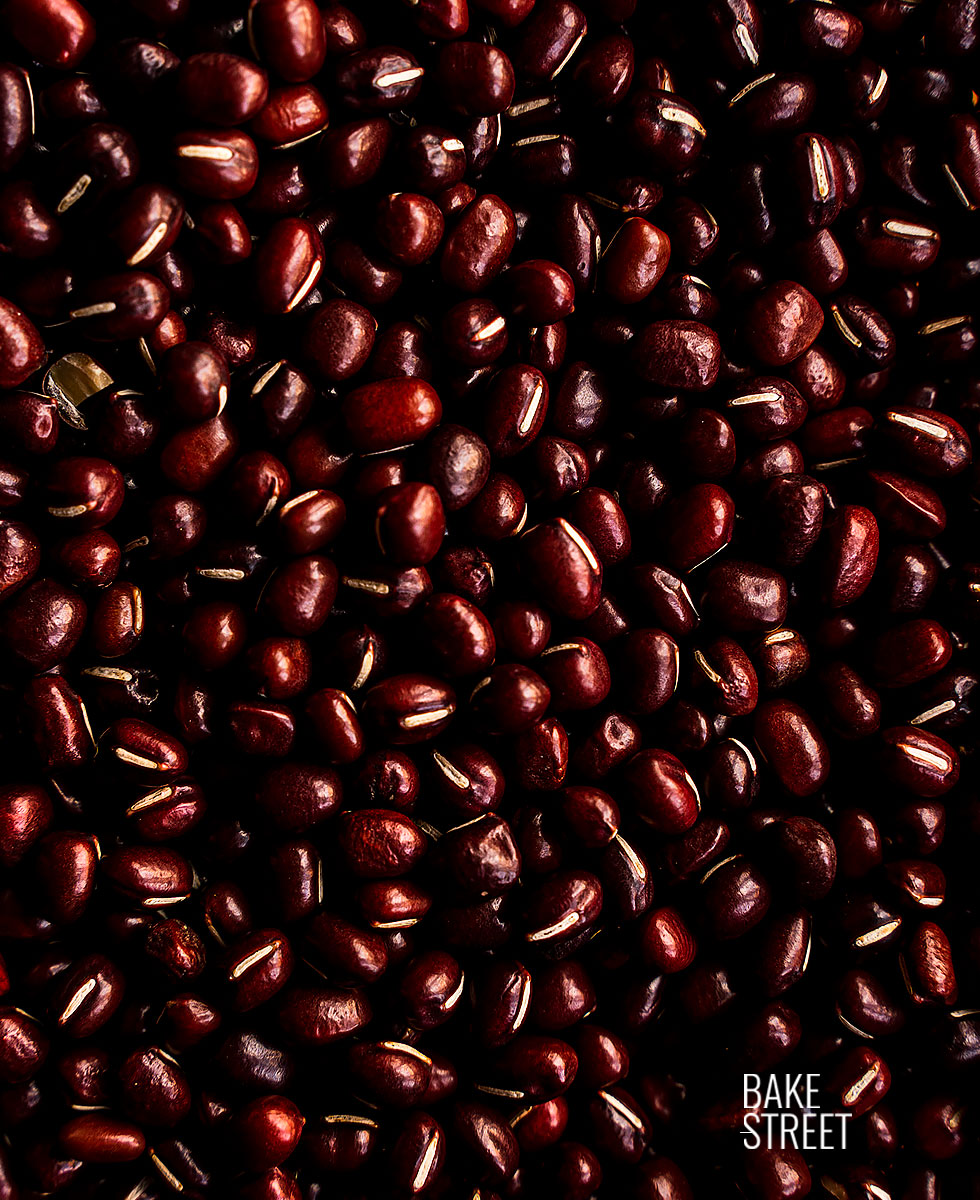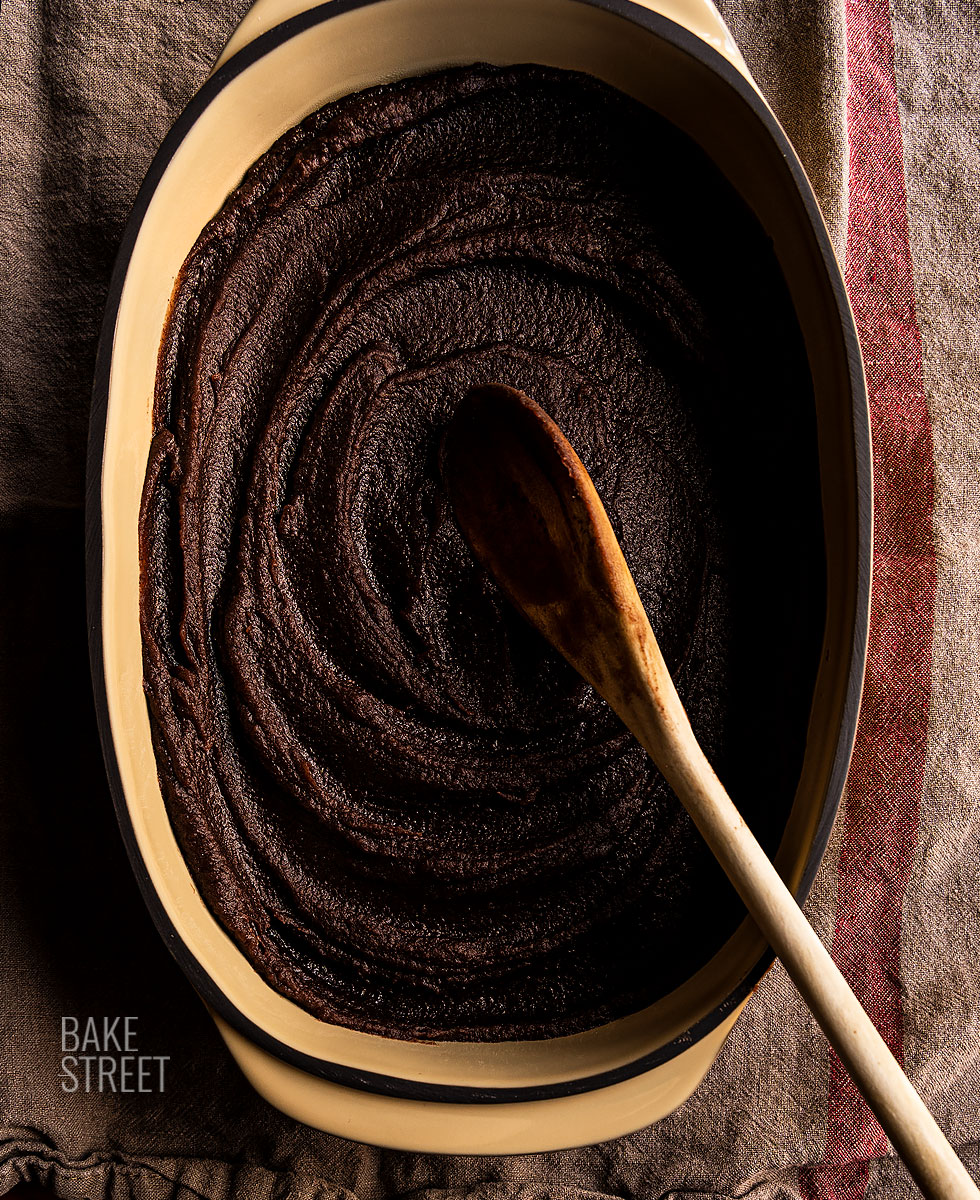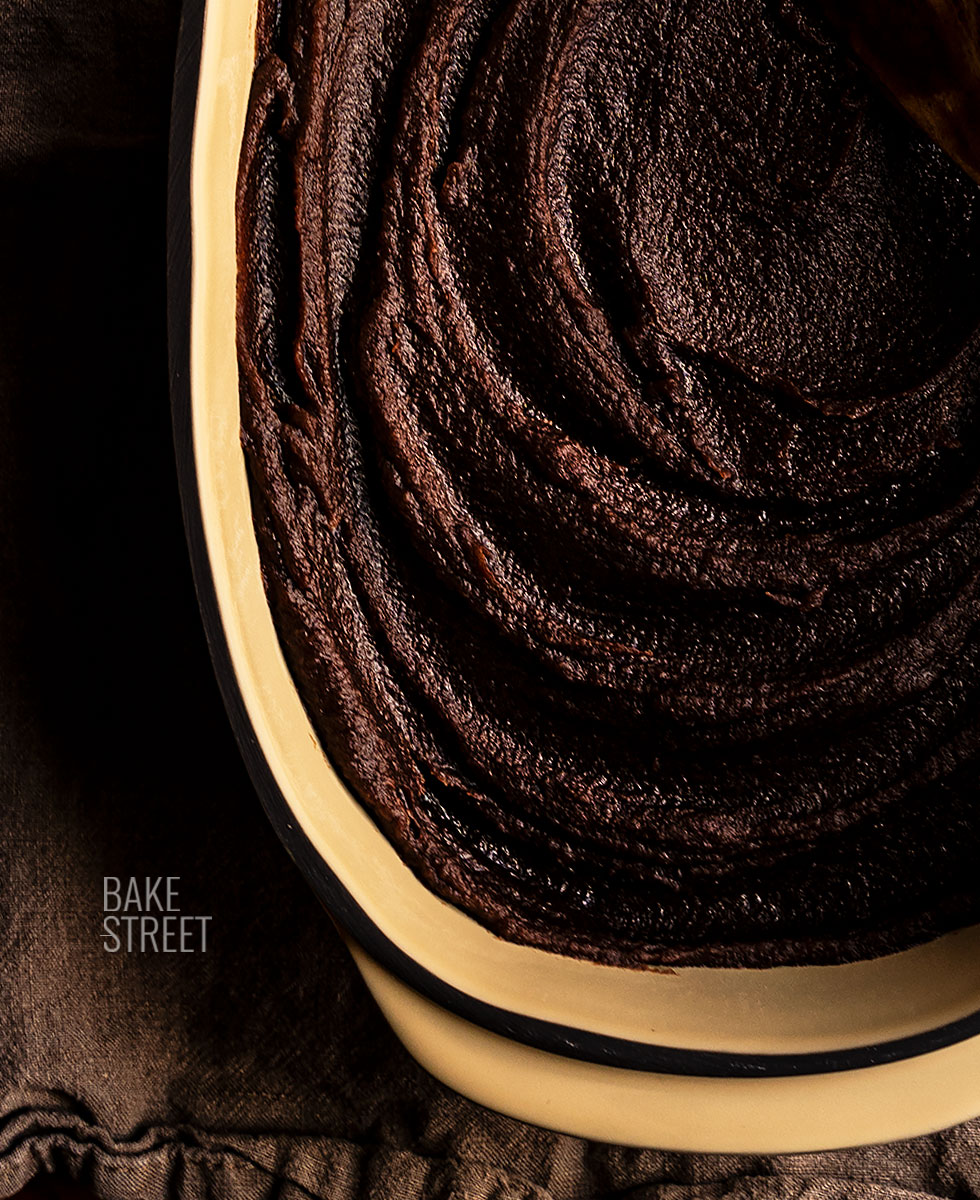
How to make Anko, sweet red bean paste
I can’t tell you how long I’ve been wanting to make Anko, sweet red bean paste, at home. It is a product that has always caught my attention for the mere fact of being made with beans and being sweet. It may seem silly, but that’s how it is.
I always associate some ingredients with savory or sweet preparations. Some of them may shock us in certain recipes, such as thinking of beans as a dessert, is something that at first may seem unappetizing. As I mentioned a few lines ago, I have a huge list of preparations to make and, on many occasions, they are postponed by other recipes or situations that arise. This year I did not want to let it go because in a few days I will leave you a wonderful recipe to celebrate the Mid-Autumn Festival, one of the most important in China.
As you may have already guessed, anko or sweet red bean paste is part of the preparation being its main element. So I have preferred to divide the process into two parts, so that you can prepare this recipe and leave it ready for the next one. Although it is actually a sweet paste that can be used for countless desserts (Taiyaki could be a great option!) and that I assure you will surprise you a lot and for good. I’m in love with it.
Azuki.
Azuki red beans, also called Adzuki, literally translates as “small beans (小豆)” in Japanese. These are grown, primarily, in the Hokkaido area. The larger variety of azuki beans is called Dainagon (大納言) and commands a slightly higher price than the azuki variety.

Anko origin.
Anko (餡子) or sweet red bean paste, is an elaboration made from red beans called “azuki”, a staple of traditional Japanese pastries that have been enjoyed for centuries.
It is said that anko first came to Japan from China in the 7th century along with other Chinese delicacies. At that time, “anko” referred to the filling of Chinese dumplings, which was made of meat and vegetables. However, Buddhist monks in Japan wanted to find an alternative to meat so they decided to use red bean paste instead, as they were very similar in appearance.
At that time, it was used only as a salted ingredient mixed with salt. However, over time, sweetened versions began to become more popular. The original sweetener for anko was boiled ivy sap. Several centuries later, as sugar production increased in Japan, more sugar was added to anko, making it the popular and sought-after sweet it is today.
This Japanese sweet paste can be found as An (餡),Anko (餡子, あんこ). It is the most common filling used in Japanese pastries. In fact, sweet bean paste can be found in many other Asian preparations and desserts.
In Japanese cuisine, the word “Anko” or “An”, usually commonly refers to a red bean paste.
But also implies other varieties:
- Shiro-an (白あん) : Made with lime, butter or beans instead of red, this variety has a slightly more refined sweetness compared to its darker counterpart. It also has a creamier texture.
- Kuri-an (栗あん) : This paste is made by mixing candied chestnuts with shiro-an, or by grinding steamed chestnuts to a smooth paste.
When it comes to making sweet red bean paste, we can find other types of anko:
- Tsubu-an (粒あん) : It has a coarse texture, chunky, in which we can find whole beans since we have not crushed or mashed them. Tsubu means “grain”.
- Koshi-an (こしあん) : It has a very fine and smooth texture.
- Tsubushi-an : It is an intermediate stage between the two previous ones, in this elaboration cooked beans are mashed, but it does not make a fine and silky puree.
- Ogura-an : This is a mixed red bean paste. In this version, the larger variety of azuki beans are used. These are simmered with honey and then mixed with koshi-an. Although the appearance is similar to tsubushi-an, the preparation methods are different. It is said to be named after Mount Ogura in Kyoto.
Traditionally, Koshi-an was made following a very meticulous and careful process.
It could be said that it was almost like performing a ritual.
I don’t know if you have seen the movie “Sweet Bean“, the story takes place in a very humble pastry shop whose specialty are dorayakis. In it we can see how careful is the process of making anko in its most classic and traditional method.
After soaking and cooking the beans, the skins should be removed. Within the degree of involvement, you can separate the skin of the beans one by one by hand or pass them through a strainer with the help of a wooden spoon. In this last case, it is very possible that we need to add a little water to favor this process.
Once the beans are crushed and with the skin removed, place them in a large bowl and cover them with water. Let them rest for 30 minutes, remove the water and cover them again. Discard the water again, cover and leave for another five minutes or until the water runs clear.
Once this is done, place the bean paste in a cheesecloth to remove all the liquid and obtain a fine, smooth paste. This is placed in a pot together with the sugar and the salt and we cook until obtaining a thick paste.
We are not going to elaborate it this way…
I do not doubt at all that all this care and love carried out in the elaboration will result in an exceptional product. But, in our case, we are going to “modernize” a little to reduce the time of elaboration, trying to maintain the essence of its origins.
We will make use of a food processor that, among other things, will allow us to process the beans with their skins, obtaining a very fine and smooth paste. Without forgetting how much the time of the whole elaboration process will be reduced.
Sweet bean paste variations.
There are some recipes that include a portion of fat in bean paste, which can come from lard, butter or vegetable oils. This fatty addition makes the texture more unctuous and prevents the anko’s surface from cracking and drying out.
You can also find an addition of orange zest to flavor the bean paste.
These two variations I have found in Chinese recipes that elaborated the paste to be used, later, to make mooncakes.

Anko recipe
INGREDIENTS:
- 250 g azuki beans
- 225 g sugar (we can use a combination of 50 g of dark muscovado sugar + 175 g of white sugar)
- 1/2 tsp salt
- 3-4 Tbsp olive oil
MATERIAL NEEDED:
- digital scale
- medium pot
- wooden spoon
- colander
- food processor or blender
- large recipient to store anko
Instructions
Wash and cook beans.
- Rinse azuki beans thoroughly under cold running water. Remove any broken, discolored or damaged beans.
- Transfer to a large pot and cover with water until there is about 3 cm of water above the beans.
- Place over medium high heat and bring the water to a boil.
- Once it comes to boil, reduce to medium heat and let it boil for 2 minutes.
- Drain the beans in a colander and discard the water.
- Dump the beans back into the pot and cover with water in the same way as the first time.
- Place on medium high heat until it comes to boil. Reduce to low heat and simmer for 90-120 minutes. The amount of water should be checked throughout the cooking time because it will be reduced. We will have to add more whenever necessary. When we do so, we must add cold water.
- After an hour and a half we will check the tenderness of the beans, when they are tender and we can smash them between the fingertips, they will be ready.
Mash the beans.
- Once the beans are tender, pour into a colander and reserve the water.
- Add the beans in a food processor along with 3-4 tablespoons of the cooking water and blend. We will do it several times until we obtain a fine and smooth paste.
- If the paste obtained is too dense and we cannot grind it well, add a little more water to facilitate this step.
Cook azuki beans.
- Pour the bean paste into a large pot with olive oil. Place over medium heat and cook for 2-3 minutes.
- Add half of the sugar and cook, stirring constantly, until the sugar is completely absorbed.
- Add the other half and continue stirring until it is absorbed.
- Add salt and continue cooking stirring constantly. We must dry the bean paste slightly until obtaining a mixture with density and that we can model later. This process can take about 30-40 minutes.
- To know that the paste is ready, we will slide the wooden spoon along the base. A hollow will be created in which the paste will stay on the sides and will not flood it.
- Remove from the heat and transfer the bean paste to a large bowl or recipient. Spread and let it cool.
- At this stage we can either use it or store it in an airtight container in the refrigerator.

Notes for a perfect anko
- To make anko, we must use a variety of red bean called azuki.
- Sweet bean paste can be made with white beans following the same process. In this case it is called Shiro-an and is widely used to make mochi and manju.
- To elaborate the sweet red bean paste we can soak the beans, the night before, if we wish. This step will reduce the final cooking time. But, we can do the process without soaking them as I show you in the post.
- During the first 4 hours of soaking, the beans do not absorb any water. To soften them and reduce the cooking time, they should be left to soak for about 12-18 hours.
- If we decide to soak the beans, we can add 1/2 teaspoon of baking soda for every 250 g of beans, in order to enhance the color of the beans and make the skin smoother.
- If we soak the legumes, the final cooking time can be around 40-50 minutes.
- Why do we discard the first cooking water? The reason we boil azuki beans and discard that first water is to remove the astringency (shibumi in Japanese 渋み) from the product. This same technique is used to cook bamboo and bitter gourd. Depending on the product, it can be cooked and the water discarded between 1-3 times. I do this same step, in my case, to remove the bitterness from citrus peels when I confit them.
- If we wish, we can use a pressure cooker instead of a conventional pot to cook red beans. In this case, it will not be necessary to soak them beforehand.
- During cooking of beans cold water is added, the reason is that it will enter through the skin of the beans and help them to soften. The cold water also helps to regulate the temperature of the pot and the cooking speed of the beans. If the beans are cooked too fast and at too high a temperature, the skins will crack, which will affect the flavor and consistency of the anko.
- Ideally, the ratio of beans to sugar should be 1:1, i.e. the same amount of beans as sugar. We can always reduce it a little if we wish, but we must keep in mind that we will shorten its shelf life. The less sugar we use, the less time we can keep it. Many Japanese sweets, in their process, only use anko as a sweetened ingredient. So the total amount is compensated. For my part I have left a ratio of 1:0.9.
- I recommend not omitting salt, even though it is a very small amount. This ingredient helps us to enhance flavors, in addition to the umami.
- The cooking or drying time of bean paste in the pot will depend on the amount of water in the beans.
- Keep in mind that sugar is hygroscopic, which means that it absorbs moisture from the environment. So it is completely normal that we notice that the bean paste liquefies a little when it has been integrated.
- When we let the anko cool, spread on a tray or container, we should not cover the surface. The reason is that as it cools, it will continue to evaporate water and the paste will become a little thicker. If we cover with film, it will condense and acquire that humidity again.
- We can keep anko refrigerated, inside an airtight container, for 2 weeks or freeze it for 2 months.
It is possible that when you read the whole process to elaborate the anko or sweet red bean paste, you may find it laborious. But nothing further from the truth.
It is a process that practically takes care of itself. It is true that in some steps it requires our attention, but we only have to be more present when blending the beans and cooking them with sugar. The rest does not require, or hardly requires, our presence.
And in return we get an exceptional sweet red bean paste. I assure you that it can be eaten on its own, just as it is. Although used as a filling for elaborations it is.... Outstanding.
Lots of love and, by the way, I'm back on the blog! :)
Eva
Sources:Just One Cookbook, Itadakimasu Anime!, Savor Japan



